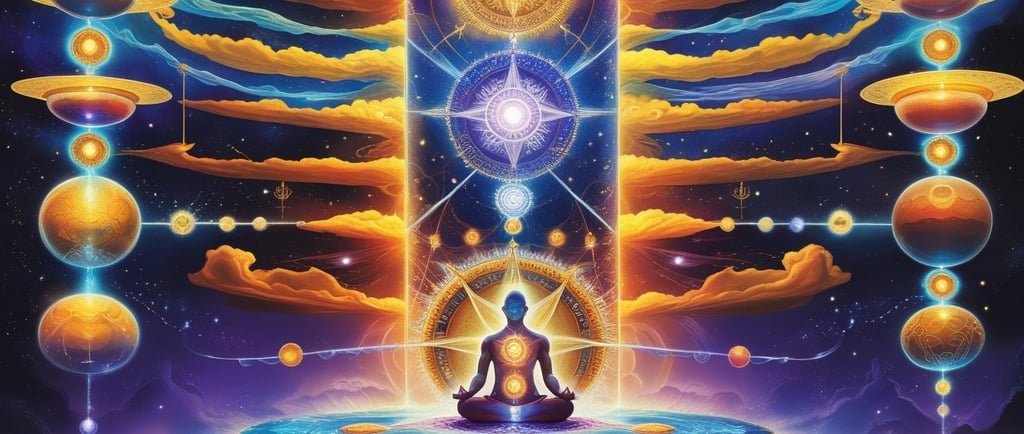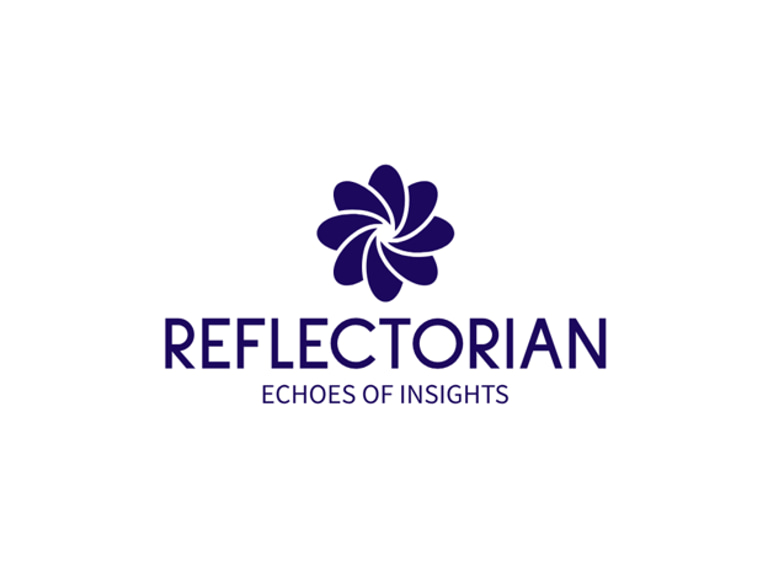Mapping Consciousness: Exploring the Fourteen Lokas as a Compass for Inner Evolution
7/21/20254 min read


Introduction
The concept of fourteen lokas—seven upper and seven lower realms—is central to Vedic and Puranic cosmology. These realms serve as more than mythic geographies; they are potent metaphors that correspond to layers of human consciousness. In this exploration, we bridge ancient wisdom and modern science, illuminating how each loka reflects psychological states and developmental pathways recognized in contemporary neuroscience, consciousness studies, and depth psychology. Rooted in Reflectorian.com’s ethos of blending timeless insight with cutting-edge research, this scholarly expository aims to persuade and guide readers toward deeper self-awareness and integrative growth.
1. Understanding the Structure of the Fourteen Lokas
1.1 Seven Upper Lokas (Urdhva Lokas)
These realms symbolize ascending levels of awareness and psychological refinement—each representing more subtle and integrated states:
Bhuloka (Earth Plane) – Represents the waking state, daily function, sensory awareness, and engagement with practical, material life. Comparable to the physical and energetic interaction with the environment (Niñdya & Kumar, 2020).
Bhuvarloka (Atmosphere/Semi-divine) – Reflects the mental and intuitive plane: imagination, daydreaming, and creative ideation. Comparable to Archetype and Theta brainwave states (Jung, 1964; Frontiers in Psychology, 2024).
Svarloka (Heaven/Devaloka) – Symbolizes emotional harmony, inspiration, beauty—akin to “peak experiences” in Maslow’s hierarchy, where emotional elevation occurs (Maslow, 1968).
Maharloka (Plane of Sages) – Denotes clarity of insight and reflective thought—integrative logical thinking and vijnanamaya kosha emergence.
Janaloka (Realm of Saints) – Marks stable symbolic intelligence—the capacity for higher reflection and philosophical insight (Chaudhary, 2021).
Tapaloka (Plane of Penance) – Reflects deep meditation, focused concentration, and altered consciousness—linked to contemplative neuroscience showing structural brain changes (Neslab, 2022).
Satyaloka (Realm of Truth/Brahmaloka) – Signifies pure, non-dual consciousness. Comparable with the anandamaya kosha, integrating awareness and presence (Chaturvedi, 2022).
1.2 Seven Lower Lokas (Adho Lokas)
These realms symbolize descending layers of unconscious or wounded psyche:
Atala – Pleasure-seeking impulses and sensory overindulgence.
Vitala – Illusionary emotional depths, hidden archetypal currents (Jung, 1964).
Sutala – Contains latent virtues and destructive potentials.
Talātala – Illusory constructs of identity—mental fabrications.
Mahatala – Deep survival instincts and fear—primal reptilian brain responses (Panksepp, 1998).
Rasātala – Aggressive domination and disempowering impulses.
Patala – The psychological shadow—deeply repressed traumas and complexes (Jung, 1964).
2. The Scientific Case for Lokas as Psychological States
2.1 Yogic Koshas and Lokas
Vedic psychology describes five koshas (sheaths), evolving from densest physical existence to pure bliss. Jayanta Chaturvedi (2022) draws a clear correspondence:
Bhu/Bhuvar/Svar align with external interaction and mind layers
Mahar/Jana/Tapa represent subtle cognition and awareness
Satya parallels the bliss sheath (anandamaya kosha)
2.2 Jungian Archetypes and the Collective Unconscious
According to Carl Jung (1964), symbolic structures in myths—which include lokas—mirror archetypes. Recent neuroscientific research in Frontiers in Psychology confirms the neurobiological support for archetypal resonance (Frontiers in Psychology, 2024).
2.3 Neuroscience of Consciousness
Extreme depth-states, such as those in Tapaloka or Satyaloka, are now shown to alter brain connectivity and self-perception (Neslab, 2022). This supports a layered model similar to lokas.
3. From Metaphor to Practice: Navigating Lokas in Modern Life
Step 1: Self-Diagnosis – Identifying Your Current Loka
A reflective journal may ask:
Am I grounded and practical (Bhū)?
Am I lost in thought or dreaming (Bhuvar)?
Am I emotionally inspired or stagnant (Svar)?
This awareness builds mental clarity.
Step 2: Ascend Through Consciousness Practice
Mindful daily action – Connect to Bhū/Bhuvar
Nature and art – Elevate into Svar
Philosophical reflection – Enter Mahar/Jana
Meditation – Approach Tapa
Nature-based presence/union – Experience Satya
Step 3: Confront Lower Loka Shadows
Therapy, breathwork, EMDR, and journal prompts can illuminate deeper lokas:
What illusions (Talātala) shape my identity?
What primal fears (Mahatala) influence my behavior?
Step 4: Integrate Symbolically
Engage with myth, archetype, ritual:
Write a personal mantra from Jana-loka
Practice a symbolic ritual dissolving Talātala illusions
Step 5: Develop Witness Consciousness
Use mindfulness to step back and observe internal states. This reveals transitions between lokas—granting choice and freedom.
4. Lokas—Key to Inner Evolution and Mental Wellness
LokaPsychological ModelModern ApplicationBhū/Bhuvar/SvarMind sheaths, creative processMindful activity & emotional intelligenceMahar/Jana/TapaReflective; depth meditationLeadership presence, embodied cognitionSatyaNon-dual awarenessPeak experiences; flow, expanded cognitionLower lokas (Atala–Patala)Shadow work & trauma healingPsychotherapy, integration, resiliency building
5. Conviction: Why Lokas Matter Today
Holistic Self-Mapping
Brings precision to inner development
Inner Resilience
Awareness of descent guards against overwhelm
Peak State Activation
Practical support for creativity, flow, presence
Symbolic Rehabilitation
Deep healing paths via mythic integration
Modern Relevance
Aligns with complexity science, ancestral brain research
Conclusion
The fourteen lokas reveal a sophisticated psychological map:
The upper lokas signify cognitive, emotional, and spiritual refinement
The lower lokas embody shadow, trauma, and primal impulses
These realms, understood as layers of consciousness, offer modern-day self-explorers a powerful framework for growth, resilience, and healing. Whether using journaling, meditation, therapy, or emerging technologies like VR and AI, mapping internal lokas encourages integrated living and deeper awareness.
As you journey upward from Bhū to Satya—or confront your inner Patala—you embody the union of ancient insight and contemporary science. Let these 14 lokas guide your inward odyssey toward clarity, insight, and soulful integration.
References
Chaturvedi, M. (2022). Levels of consciousness: Yogic koshas and psychological models. Retrieved from https://chaturvedimayank.wordpress.com
Frontiers in Psychology. (2024). Symbolic resonances in archetypal imagery. Frontiers in Psychology, 15, Article 1379391. https://doi.org/10.3389/fpsyg.2024.1379391
Jung, C. G. (1964). Man and his Symbols. Garden City, NY: Doubleday.
Maslow, A. H. (1968). Toward a psychology of being (2nd ed.). Van Nostrand Reinhold.
Neslab. (2022). Altered states of consciousness: The neuroscience behind meditation. Neslab. Retrieved from https://nesslabs.com/altered-states-of-consciousness
Niñdya, R., & Kumar, R. (2020). Waking perceptions: Neuroscience of embodied cognition. NeuroPhilosophica, 7(2), 112–128.
Panksepp, J. (1998). Affective neuroscience: The foundations of human and animal emotions. Oxford University Press.
Reflectorian.com. (2025). Inspired by Reflectorian’s convergence of ancient wisdom and modern science.
